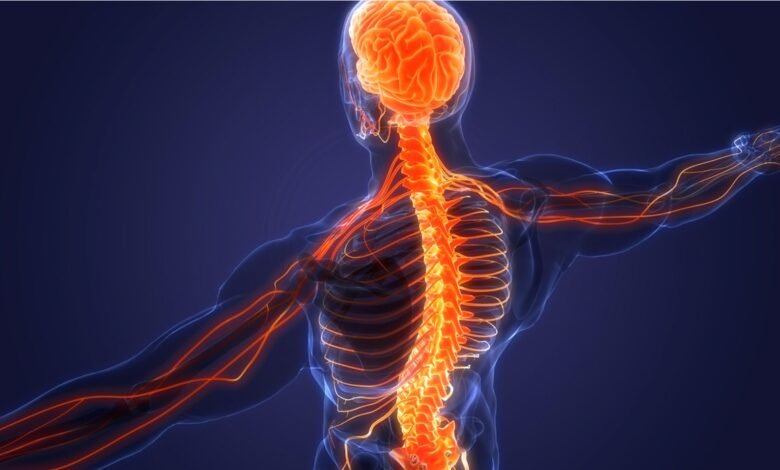Exploring Spinal Disorders in 2023

The human spinal column is a complex and vital structure that plays a crucial role in supporting the body and facilitating movement. However, various factors can contribute to the development of spinal disorders, leading to pain, discomfort, and limited mobility. In this article, we Exploring Spinal Disorders in 2023, their causes, symptoms, diagnosis, treatment options, and preventive measures.
Read More: Do You Need Medical Attention for Back or Neck Pain
Exploring Spinal Disorders
The spine, also known as the vertebral column, is composed of 33 vertebrae stacked on top of each other, separated by intervertebral discs. It can be divided into five regions: cervical, thoracic, lumbar, sacral, and coccygeal. Each region has specific functions and characteristics.
The spine serves several essential purposes, including providing structural support to the body, protecting the spinal cord, and allowing for flexibility and movement. It also houses the intricate network of nerves that transmit signals between the brain and the rest of the body.
Common Spinal Disorders
Herniated Disc: A herniated disc occurs when the soft, gel-like center of a spinal disc protrudes through a tear in its outer shell. This condition can compress nearby nerves, resulting in pain, numbness, and weakness in the affected area.
Spinal Stenosis: Spinal stenosis refers to the narrowing of the spaces within the spine, leading to the compression of the spinal cord and nerves. It often occurs as a result of degenerative changes in the spine, causing pain, cramping, and difficulty walking.
Scoliosis: Scoliosis is a condition characterized by an abnormal sideways curvature of the spine. It can develop during childhood or adolescence, and in severe cases, it may cause discomfort, postural abnormalities, and breathing difficulties.
Degenerative Disc Disease: Degenerative disc disease involves the gradual deterioration of the intervertebral discs. As these discs lose their cushioning properties, it can lead to pain, stiffness, and reduced mobility.
Causes and Risk Factors
Several factors can contribute to the development of exploring spinal disorders. Understanding these causes and risk factors is essential for effective prevention and treatment.
Age and Genetics: The natural aging process can cause wear and tear on the spine, making it more susceptible to disorders. Additionally, certain genetic conditions can increase the risk of developing spinal abnormalities.
Trauma and Injury: Accidents, falls, sports injuries, or repetitive strain can damage the spine and lead to various disorders. Trauma to the back or neck can result in fractures, herniated discs, or other structural issues.
Poor Posture and Lifestyle: Prolonged sitting, incorrect lifting techniques, and poor posture habits can put a strain on the spine over time. Sedentary lifestyles, obesity, and lack of exercise can weaken the supporting muscles, making the spine more vulnerable to problems.
Signs and Symptoms
Recognizing the signs and symptoms of spinal disorders is crucial for early detection and timely intervention. Here are some common indicators:
Back Pain: Persistent or recurring pain in the back or neck is a common symptom of spinal disorders. The pain may be localized or radiate to other areas, such as the arms or legs.
Numbness and Tingling: Compression of nerves in the spine can lead to sensations of numbness, tingling, or “pins and needles” in the affected areas.
Muscle Weakness: Spinal disorders can cause muscle weakness or atrophy. Weakness may be noticeable in the arms, legs, or other parts of the body depending on the location of the problem.
Loss of Coordination: As spinal disorders affect nerve function, individuals may experience difficulties with balance, coordination, or fine motor skills.
Diagnostic Procedures
Accurate diagnosis is crucial for determining the appropriate treatment approach. Healthcare professionals use various diagnostic procedures to evaluate spinal disorders, including:
Physical Examination: A thorough physical examination helps identify physical signs, assess range of motion, and evaluate neurological function.
Imaging Tests: X-rays, magnetic resonance imaging (MRI), and computed tomography (CT) scans provide detailed images of the spine, allowing healthcare professionals to visualize abnormalities and assess their severity.
Electromyography (EMG) and Nerve Conduction Studies: These tests evaluate the electrical activity of muscles and nerves, helping diagnose nerve-related conditions and pinpoint the location of the problem.
Treatment Options
The treatment approach for spinal disorders depends on the specific condition, its severity, and the individual’s overall health. The following options may be considered:
Non-Surgical Treatments: Non-surgical treatments include pain management strategies, physical therapy, chiropractic care, and the use of braces or support to alleviate symptoms and improve functionality.
Medications and Pain Management: Medications such as nonsteroidal anti-inflammatory drugs (NSAIDs), muscle relaxants, and analgesics can help manage pain and inflammation associated with spinal disorders.
Physical Therapy: Physical therapy programs focus on strengthening the supporting muscles, improving flexibility, and correcting posture. Therapeutic exercises and manual techniques can enhance overall spinal health.
Surgical Interventions: In cases where non-surgical approaches are ineffective or the condition is severe, surgery may be necessary. Surgical interventions can involve removing herniated discs, stabilizing the spine, or correcting deformities.
Rehabilitation and Recovery
Following surgical interventions, rehabilitation plays a crucial role in the recovery process. Rehabilitation programs aim to restore function, improve mobility, and prevent further complications. This may involve post-surgery rehabilitation, physical therapy sessions, and lifestyle modifications.
Prevention and Maintenance
While not all spinal disorders can be prevented, adopting healthy habits can reduce the risk and promote spinal health. Consider the following preventive measures:
Maintaining Proper Posture: Practice good posture during daily activities, whether sitting, standing, or lifting heavy objects. Avoid prolonged slouching or hunching, as it puts strain on the spine.
Regular Exercise and Strengthening: Engage in regular physical activity that focuses on strengthening the core muscles and supporting the spine. Exercises such as yoga, swimming, and low-impact aerobics can help maintain spinal flexibility and strength.
Ergonomic Adjustments: Make ergonomic adjustments to your workspace or environment to reduce strain on the spine. Ensure your chair, desk, and computer setup are ergonomically designed and supportive.
Healthy Lifestyle Choices: Maintain a healthy weight, as excess weight can burden the spine. Incorporate a nutritious diet rich in vitamins and minerals that support bone health, such as calcium and vitamin D.
Emerging Technologies and Research
The field of spinal disorder treatment is constantly evolving, with ongoing research and technological advancements. Scientists and medical professionals are exploring innovative techniques, such as minimally invasive surgeries, regenerative medicine, and bioengineering approaches to enhance spinal health and improve treatment outcomes.
Conclusion
Exploring Spinal Disorders can significantly impact a person’s quality of life, causing pain, limitations in movement, and discomfort. Understanding the common disorders, their causes, symptoms, and available treatment options is vital for early detection and effective management. By adopting preventive measures and maintaining a healthy lifestyle, individuals can reduce the risk of spinal disorders and promote overall spinal health.
Read More: The Benefits of Visiting an Orthopedic Spine Specialist
FAQs
Are spinal disorders only common among older individuals?
Spinal disorders can affect individuals of all ages. While some conditions are more prevalent among older adults, factors such as trauma, injury, and genetic predisposition can lead to spinal issues at any age.
Can physical therapy alone treat spinal disorders?
Physical therapy plays a crucial role in managing and rehabilitating spinal disorders. However, the effectiveness of treatment depends on the specific condition and its severity. In some cases, surgical interventions may be necessary.
Are all spinal disorders painful?
Not all spinal disorders cause pain. Some individuals may experience mild discomfort, while others may have severe pain. It depends on the nature of the condition, its location, and individual factors.
Can lifestyle modifications help prevent spinal disorders?
Yes, adopting a healthy lifestyle and practicing good posture, regular exercise, and ergonomic adjustments can reduce the risk of spinal disorders. These preventive measures promote spinal health and overall well-being.
Are there non-surgical alternatives for treating spinal disorders?
Yes, non-surgical treatments such as physical therapy, medications, and pain management strategies are often used to alleviate symptoms and improve functionality. However, in certain cases, surgical interventions may be necessary for long-term relief.







